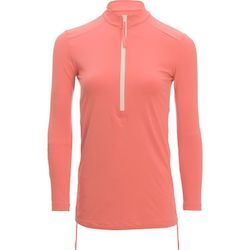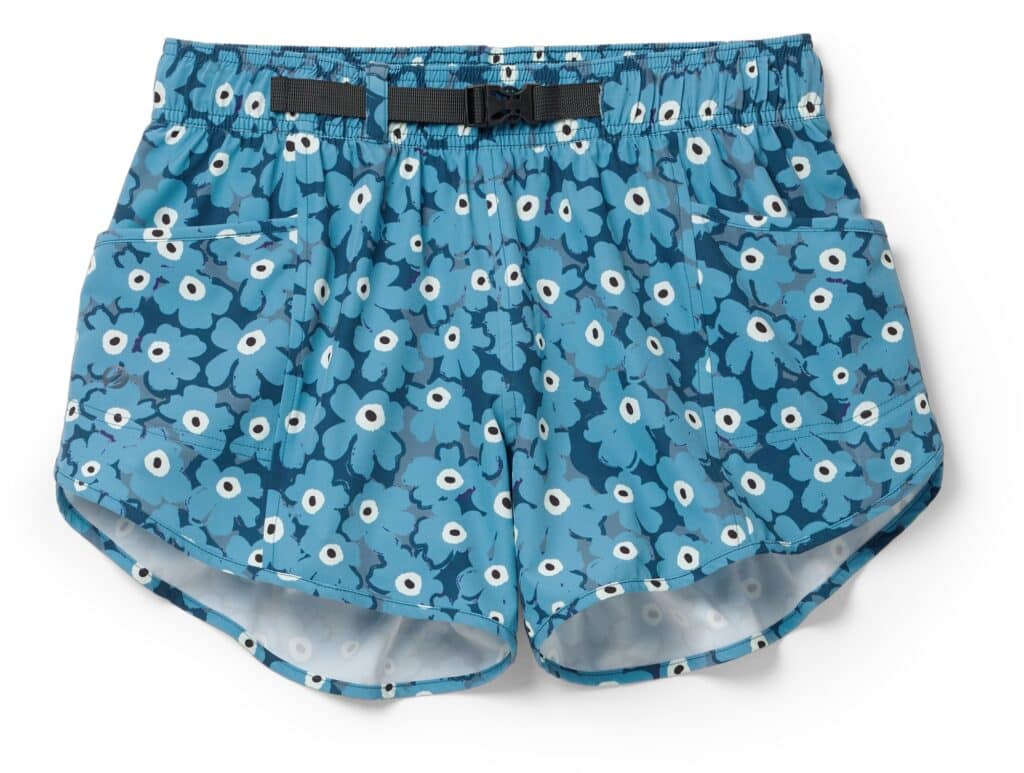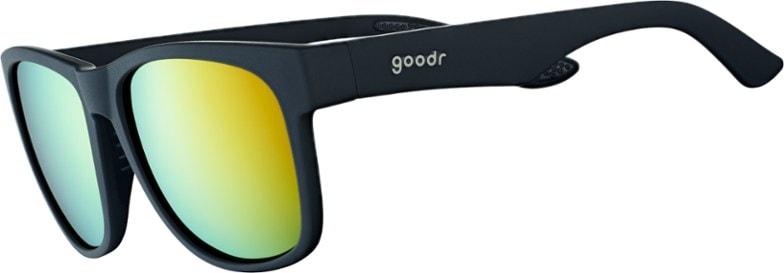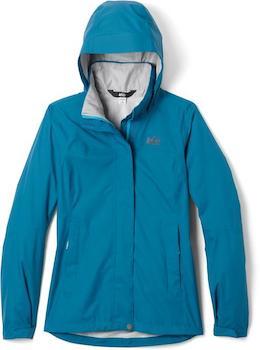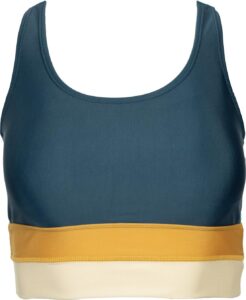Kayak Camping: Tips for Planning, Packing, & Gear
Learn the best kayak camping tips for beginners including essential kayak camping gear, how to pack a kayak, tips for buying a kayak, & more
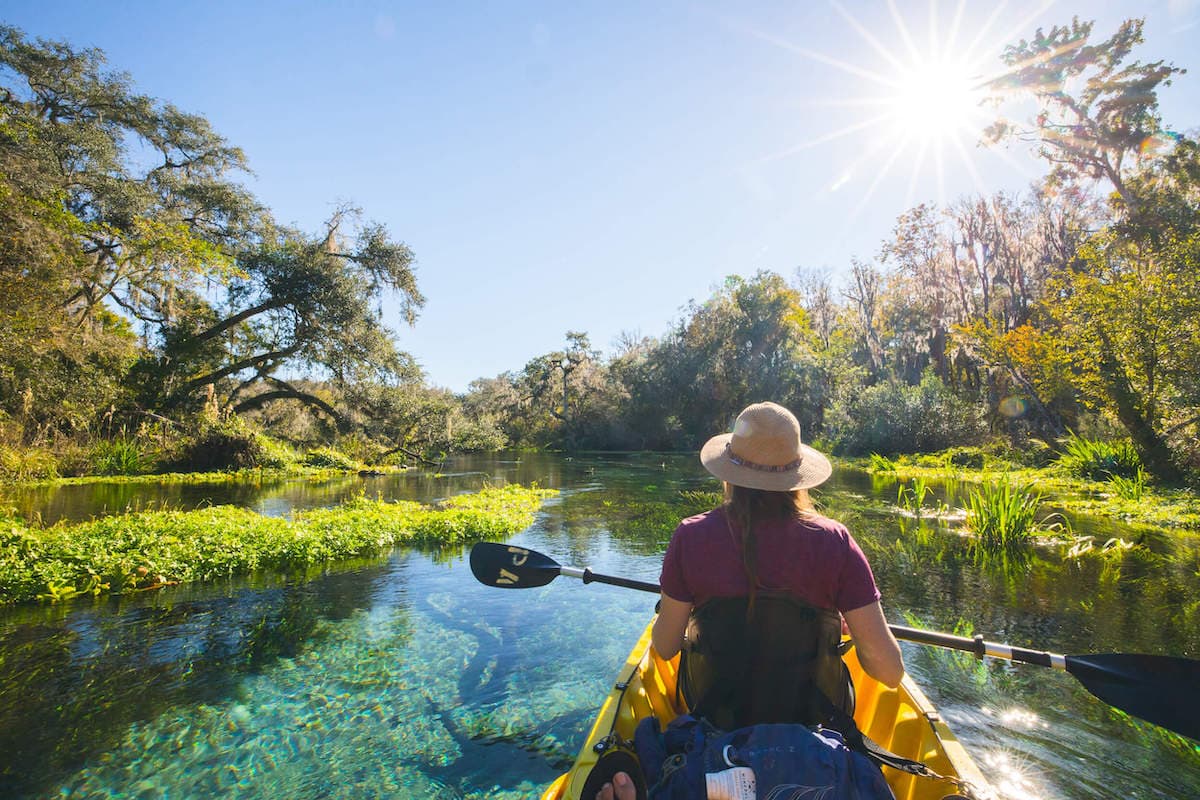
If you love kayaking and you also love backpacking, you should add kayak camping to your adventure list! You’ll not only get to experience backcountry wilderness but also the serenity of being on the open water. One of the best parts of kayak camping is that you don’t have to haul a heavy load on your back for miles on end. You’ll still get a workout as you paddle a boat full of gear, however, plus camping with a kayak gives you more flexibility to take breaks and offers a whole new view, even in areas you’ve already explored.
So whether you’re looking to try kayak camping for the first time or you’re planning your next adventure, this guide will give you tips and advice to help you get out on the water and make the most of your trip.
Here’s our complete guide to kayak camping.
Important Reminder: As outdoor recreationists, it’s our responsibility to know how to recreate responsibly on the water whether we’re kayaking, paddleboarding, canoeing, rafting, or boating. Learn how to prevent the spread of aquatic invasive species with 3 easy steps that have a huge impact on our ecosystems.
How to Choose a Kayak Camping Location
Selecting your perfect kayak camping location will help you determine how and what to pack. The art of loading a kayak with gear can take some time to perfect, so save the whitewater rapids for another trip and start with more of a calm water destination.
I’d recommend starting with a lake or river that has already established campsites. Keep in mind that if you opt for a river, you’ll likely need an extra vehicle to park at the end of the trip. Plan on sticking to one or two nights for your first excursion. Depending on how experienced you are, anywhere between five to fifteen miles per day should give you plenty of time to paddle and take breaks.
If you decide to hunt out your own site, be sure to set up camp at least 200 feet from the water. Camping in coastal areas offers a chance to see different wildlife, but be sure to take the tides into account when selecting the spot to set up camp.
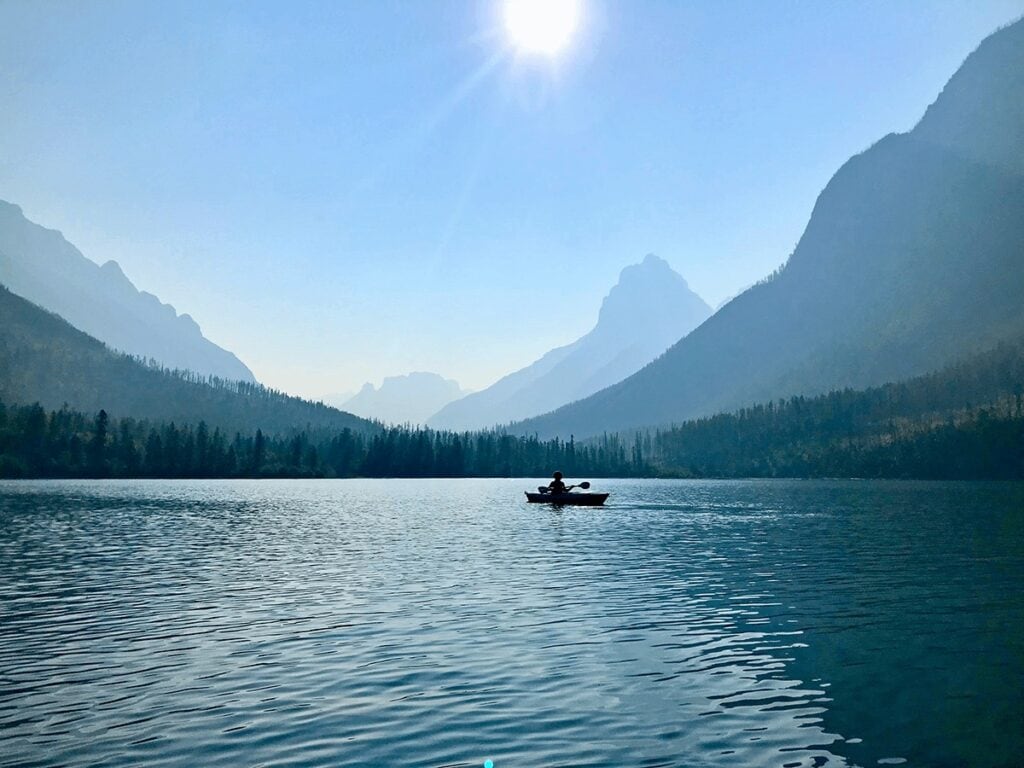
How to Choose a Kayak
Ultimately, the best kayak for camping is the one you already own. If you plan on renting or investing in a kayak for camping, here are a few things to consider in advance.
- Storage will be crucial to your comfort. You’ll need to store almost everything in dry bags, but having a watertight compartment is a nice feature as well. You can use it to protect valuables like your phone and camera. It’s also a relief to get to camp and have at least some things that are dry. Touring kayaks are typically equipped with these watertight compartments.
- Comfort is a necessity with long days on the water. My primary kayak, similar to this Perception Joyride 10 Kayak, has a supportive seat and foot braces. It also has thigh pads that help with stability. These are all features that will help you paddle for miles with a full kayak. If your seat doesn’t offer enough support, you can install a separate kayak seat to ensure a comfortable trip.
- Comfort isn’t limited to your kayak, however. If your paddle doesn’t have any cushioning, your hands will likely hurt after a day on the water. Adding paddle grips can make a surprising difference in how long you can paddle in a day.
Essential Kayak Camping Gear
For backpacking enthusiasts, packing for a kayak camping trip will feel familiar. You’ll be bringing most of the same gear, switching out your backpack for a kayak. Since you won’t have to carry all of your gear, you’ll have a little more room for a luxury item or two. Here are some must-bring items:
Kayak Camping Accessories
- Dry bags – Aside from a few accessible items like water and snacks, everything should be packed in dry bags. Even if you’re certain you won’t flip, anything stored on the kayak or in the hull will likely get wet. Dry bags will keep essentials dry and organized. I use several smaller Sea to Summit dry sacks to make packing easier.
- Personal flotation device – Wearing a PFD, or lifejacket, is not only a good safety protocol, but state laws typically require that you have one on board.
- Rope – Bring along a rope to tie up your kayak in case you will leave it close to shore. Paracord is compact and works great.
- Kayak repair kit – A repair kit won’t take up much room and can be a lifesaver if something goes wrong
- Towel – You’ll be living on the water for a few days, so a towel is key. PackTowl’s UltraLite Towels are easy to bring on backcountry trips and work well for how compact they are.
- Binoculars – bring along a pair of binoculars to spot wildlife right from your kayak!
Kayak Camping Gear
- Tent or hammock – Kayak camping offers more flexibility than backpacking, but you’ll still want to use a lightweight backpacking tent or hammock to conserve space and weight. If you’re kayaking in warm climates, you may be fine sleeping under the stars or just bringing the fast-pitch option if your tent has that.
- Sleeping bag – Car camping sleeping bags can be bulky and heavy, so bring along your favorite backpacking sleeping bag.
- Sleeping pad and pillow – A pillow is one of those luxury items I have to bring. Inflatable pillows always have me reaching for some clothes to use instead, so I’m a fan of Therm-a-Rest’s Compressible Pillow when there is room to pack it.
- Headlamp – You’ll need to take extra precaution if you head out on a nighttime paddle, but you’ll also need lighting for around camp. The BioLite headlamp is our favorite because it’s a rechargable, energy efficient LED headlamp that lasts a long time on a charge, especially if you use it on low.
- Small daypack – One of my favorite things about kayak camping is the ability to explore new areas onshore as well. If you think you may want to explore on land, bring along a small daypack for supplies.
Kayak Camping Clothes
- Swimwear – If you’re anything like me, you’ll have a hard time staying out of the water. Investigate the water temperature before your trip if you’d like to swim and then pack accordingly.
- Water shoes or sandals – I can’t say I do any fishing, but I love Columbia’s fishing shoes for all watersports. The PFG Tamiami Shoes have enough grip to traverse wet rocks and are comfortable for camp or heading into town.
- SPF shirt – Most kayaking spots involve a lot of open exposure, so you should plan on getting a lot of sun. Outdoor Research’s Echo line is my favorite to keep cool and protect my skin from harmful sun rays.
- Hat, sunglasses, or both – I go for the combo since the sun reflecting off of the water can be killer. The Wallaroo Sedona hat is a favorite (Use the code BEARFOOT20 for 20% off).
- Puffy: kayaking can get chilly, so having a synthetic down jacket packed away is essential so you can stay warm.
Essential Clothing for Paddling
Goodr Polarized Sunglasses
Polarized glasses are best for the reflection of the water. I like to wear budget-friendly sunglasses paddling and I always wear a retainer so I don’t lose them in the water.
Shop at:
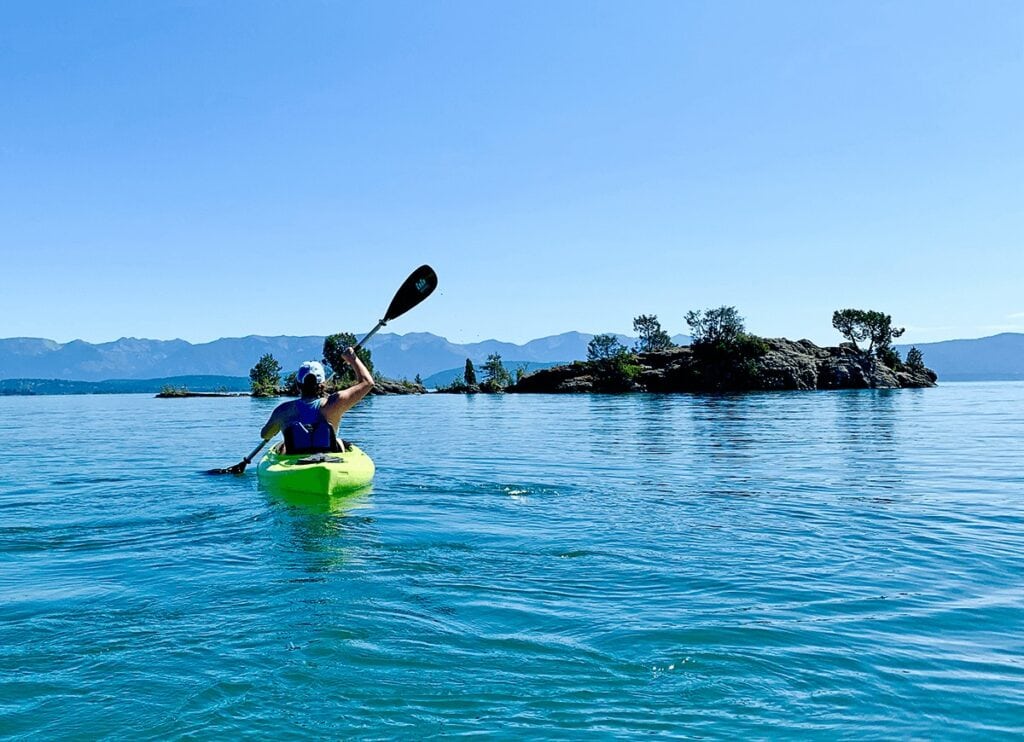
Kayak Camping Kitchen Essentials
- Stove and fuel – You can get away with bringing pre-packaged foods, but the best kayak camping food for me needs to be hot. Camp coffee in the morning is a must as well. I rarely go camping without my Jetboil Flash stove.
- Mug or bowl and utensils – I usually keep it simple with a single mug and spork. If I can’t eat it with those, I don’t need it.
- Food storage – Even if you are not in bear country, you should bring along a separate canister or bag for food with rope. A dry bag is easiest as it’ll offer more storage flexibility in the kayak compared to a canister.
- Food – This is where a lot of people will opt for a luxury item or two. I stick to dehydrated foods, but like to bring along a fancy beverage. I wouldn’t carry the weight of an extra drink on the backpacking trail but will indulge when the kayak is doing all of the work.
- Water bottle – Keep your water bottle handy as it’s easy to get dehydrated when paddling in an exposed area. A Hydroflask is nice as it keeps water cold throughout the trip and is less of a hassle than a bladder.
- Water filtration – I’ve struggled with pump or squeeze filters in the past, so I solely rely on a Platypus GravityWorks filter now.
- Garbage bag – Make sure to clean up after yourself and follow Leave No Trace principles.
Kayak Camping Toiletries & Safety Gear
- Maps – Navigating a lake or river can be a little more difficult than a marked trail. Snag a local map and compass, and download the information on your phone before your trip to keep track of your location.
- Bug spray – Campsites near the water are notorious hotspots for bugs, so bring along some insect repellent to keep the bugs at bay.
- Hygiene kit – Bring along everything that you’ll need for a few days including a toothbrush, toothpaste, sunscreen, SFP lip balm, toilet paper, hand sanitizer, and a poop kit. If the place you are visiting requires you to pack out all of your waste, be sure to bring a few wag bags and dispose of them at the end of your trip.
- First aid kit – Ensure your kit also includes a knife or other multitool along with some matches.
- Bear spray – This is a must if you are heading into bear country
- Emergency communication device – I always carry a Garmin on all outdoor adventures so I can easily call for help in case of emergency. Since many areas of the backcountry don’t have cell service, don’t rely on your phone in case things go sideways.
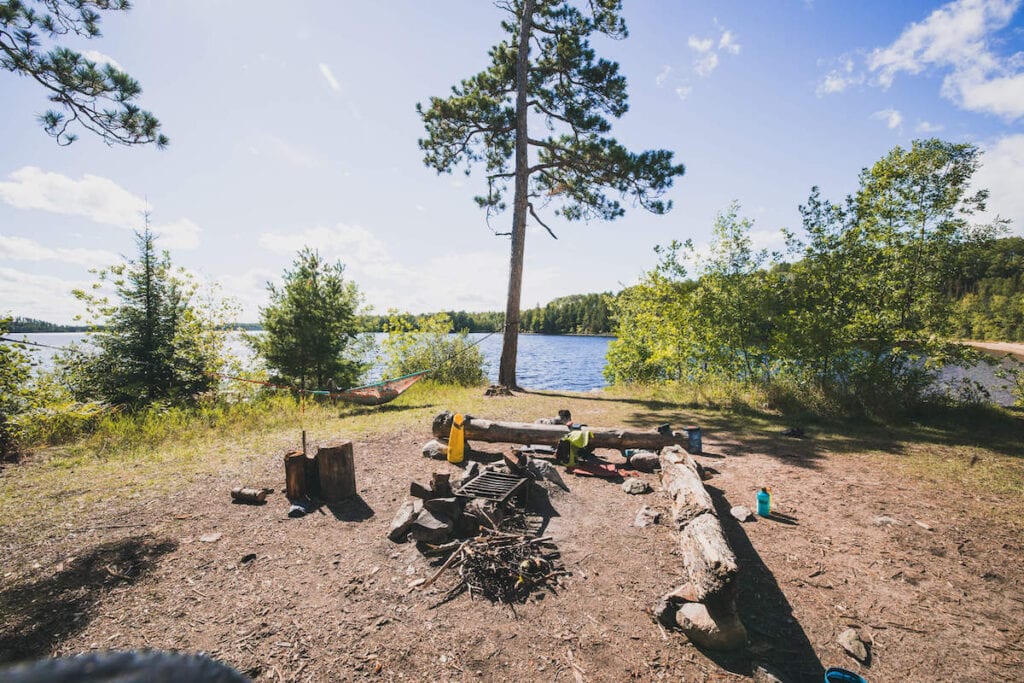
How to Load a Kayak for Camping
Packing a kayak for camping is a unique form of art. On a typical backpacking trip, you can pack your bag at home so it’s ready to go when you hit the trail. You won’t have that option when it comes to packing your kayak, so you may want to practice at home before your first trip.
Once you’ve gathered all of your gear and are ready to pack, you’ll need to keep three things in mind. You’ll need to pack strategically to ensure everything stays dry, the kayak is balanced, and certain items are easily accessible. Here are a few tips for loading your kayak for camping:
Use Dry Bags
Almost everything you are bringing should be kept in dry bags. It’s easier to get everything to fit in the kayak if you use smaller or medium size bags (like 35-65 L).
If you’re able to color-code them in some way, it will also help you locate items easier. I’ve learned from experience that it is nearly impossible to find anything when all of your dry bags are the same color. Alternatively, see-through dry bags allow you to see all your gear without having to open up every bag.
Know How to Distribute the Weight
To get the right weight distribution, keep the heaviest items like food, water, and fuel closest to your center of gravity. Ideally, your kayak will have space directly behind the seat for some of these items. You can also keep a small bag at the bottom of the boat between your legs if it won’t interfere with paddling.
Then store lighter items, like your sleeping bag and clothes, on either end with mid-weight items somewhere in between. While aiming to balance the kayak from front to back, you should also try to balance the weight from side to side as well. The heaviest items should go in the center.
Keep Your Essentials Accessible
Anything that you won’t need to access through the trip should be stored in a sealed compartment or strapped down in some way. While you of course don’t want to flip, everything should be secured in case it happens.
A waterproof fanny pack is a great way to keep your gear (like phone, sunscreen, compact camera, etc…) easily accessible while still being able to keep everything waterproof and secure. You may also want to keep another layer of clothes handy as well.
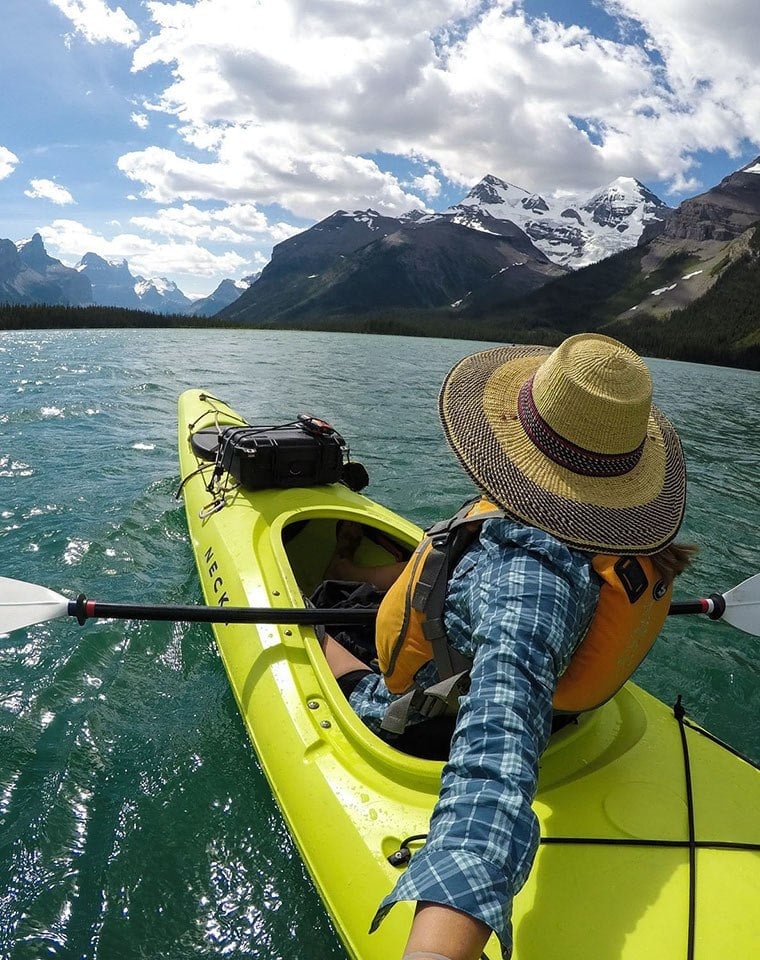
Kayak camping can feel a little intimidating at first, but it is easier than it seems. You’ll love the serenity it provides without feeling like you’re carrying the weight of the world on your back. With the right preparation, you’ll be enjoying the healing power of water in no time.
Do you have any kayak camping trips planned or any questions about this? Let us know in the comments below!


